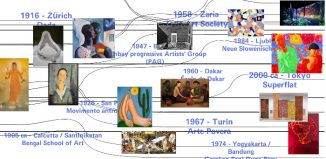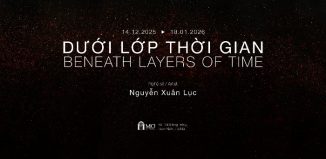KVT – Balgo and Problems
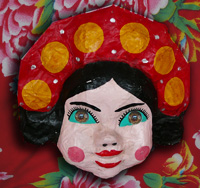 | 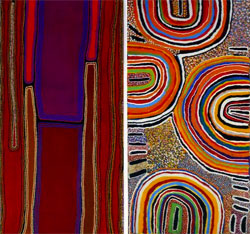 |
Hills Alive With Delightful Dots
The exhibition of contemporary art from the Balgo Hills area of remote, far northwestern Australia, a place of sandy deserts and grassy plains, is rather superb. It’s on view at the Ethnology Museum which places it in a context that is in some ways appropriate but in others disappointing.
In Australia art produced by its ethnic minority people is by far the biggest seller on the domestic and international market and the dots used by some groups in their art have almost become Australian trade marks along with boomerangs, kangaroos, koala bears, a bridge and an opera house (also often very dotty). This is remarkable when you consider that the Aboriginals and Torres Strait Islanders are only about 3% of the total Australian population which is over 20 million.
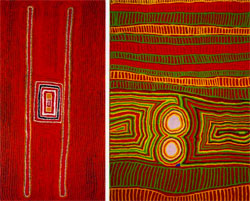
As with the work of most minority groups in the world, aboriginal art and its artists have been plagued with exploitation but nowadays viewers can mostly be assured that aboriginal art from recognized sources is of the ‘fair trade’ variety.
Aboriginal art burst into the art world consciousness when canvasses from central desert areas and by artists living and working in primitive conditions started to sell for astronomical amounts. This art was characterized by dots and some artists like Emily Kngwarrye , Clifford Possum Tjapaltjarra, Mimie Pwerle and Rover Thomas… to mention a few…have become really famous names in an international context. Emily was a sensation at the 1997 Venice Biennale.
Initially remote aboriginal art was produced in earthy, natural pigments on natural surfaces but in the 1970’s when colored acrylic paint and canvas was introduced to the artists there was a renaissance in their art and this spread across central and northern desert communities.
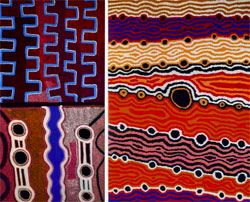
Balgo is one of the most remote and some of the people living there are only 30 to 40 years removed from hunter-gatherer lifestyles. All of the art on show is aerial view perspectives of landscapes that have particular and personal meanings to the artists.
Like all good art of this genre, the canvasses and prints on show have a beautiful fluid quality. They are never static and impossible to become bored with. It’s funny that when you enter the show your eye picks out favorites and dismisses others but when you stay with it all, preferably in the centre of the gallery space, those that you dismissed become favorites.
A look at the handsome catalogue (unfortunately not translated for Vietnamese speakers though the notes on the wall near each work are adequate) tells us that most of the artists were born before 1950 and a majority in the 1930’s. One wonders if this depiction of landscapes is becoming a thing of the past as new generations become removed from their roots by technology and globalized culture and if young artists might be in the same mind space as is Ha Manh Thang and his Not Memories at the Bui Gallery.
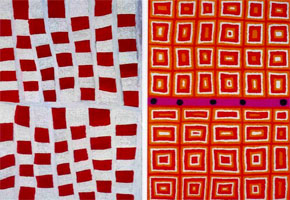
The images taken from the catalogue don’t do the reality justice. This is an exhibition of paintings and etchings that are powerful and that deserve to have a wide audience. Young Vietnamese artists with whom I’ve talked have been really excited with it all.
…………………………………………………………………………………………………………………………………………………………
The Australian Gala at the Friendship Cultural Palace on Saturday night was a great hip hop hit with the younger set and with all of the Australians present and was, as an Australian friend said very “Circular Quay”… to me it was fun but more than anything highlighted that dichotomy that exists in all cultures where older perspectives are being superseded by youthful globalization.
![]()
| Not a reviewer, not a critic, “Kiếm Văn Tìm” is an interested, impartial and informed observer and connoisseur of the Hanoi art scene who offers highly opinionated remarks and is part of the long and venerable tradition of anonymous correspondents. Please add your thoughts in the comment field below. |


